20.10.2018
![]()
A $242 million NASA mission to study the upper atmosphere is on its way to Cape Canaveral in preparation for a rare air-launch off the coast next Friday.
Northrop Grumman’s L-1011 Stargazer jet departed Vandenberg Air Force Base on Friday morning and was expected to touch down around 4 p.m. at Cape Canaveral Air Force Station’s Skid Strip.
That’s where NASA’s Ionospheric Connection Explorer mission, or ICON, will take off around 3 a.m. Oct. 26, weather permitting.
Soaring to 39,000 feet, the Stargazer will drop Northrop’s 57-foot Pegasus XL rocket carrying the 634-pound satellite off the coast of Daytona Beach as early as 4:05 a.m., near the opening of a 90-minute launch window.
The three-stage, solid-fueled rocket should deploy the refrigerator-sized satellite less than 12 minutes later in an orbit 360 miles high. The launch won't be visible from the shore, but will be televised on NASA TV.
The two-year mission will study the region where Earth's upper atmosphere interacts with the electrically charged ionosphere, influencing the activities of low-orbiting satellites and quality of GPS signals.
Rocket issues delayed the launch once planned late last year. In June, NASA switched the launch site from Kwajalein Atoll to Cape Canaveral.
The mission concludes a series of six missions in less than eight months managed by NASA’s Launch Services Program, which is celebrating 20 years at Kennedy Space Center.
Launching for the 44th time since 1990, the Pegasus is flying for only the third time in more than five years. In December 2016, a Pegasus XL successfully launched NASA's $157 million CYGNSS hurricane forecasting mission from Cape Canaveral.
Quelle: Florida Today
---
Update: 24.10.2018
.
NASA delays launch of ICON mission from Cape Canaveral
![]()
NASA has delayed this Friday's planned launch of a science mission off Florida's Atlantic coast.
The agency said Tuesday it would take time to study an issue with the air-launched Pegasus XL rocket that was discovered during its ferry flight from California to the Space Coast with NASA's Ionospheric Connection Explorer mission, or ICON.
Northrop Grumman's Stargazer L-1011 jet delivered the 57-foot rocket and ICON satellite to Cape Canaveral Air Force Station's Skid Strip last Friday.
It's the latest in a series of rocket problems that have delayed the launch once planned last December, and the second to crop up during a ferry flight.
The rocket was on its way to a planned launch from Kwajalein Atoll in June when it had to return to California.
NASA then decided to switch the launch site to Cape Canaveral.
No new target launch date for the mission was announced immediately.
"Upon completion of the testing, a new launch date will be established," NASA said in a statement. "The spacecraft remains in good health."
The mission led by scientists from the University of California at Berkeley aims to study "the frontier of space," the region where Earth's atmosphere and weather interact with the space weather.
Quelle: Florida Today
+++
Pegasus rocket launch postponed
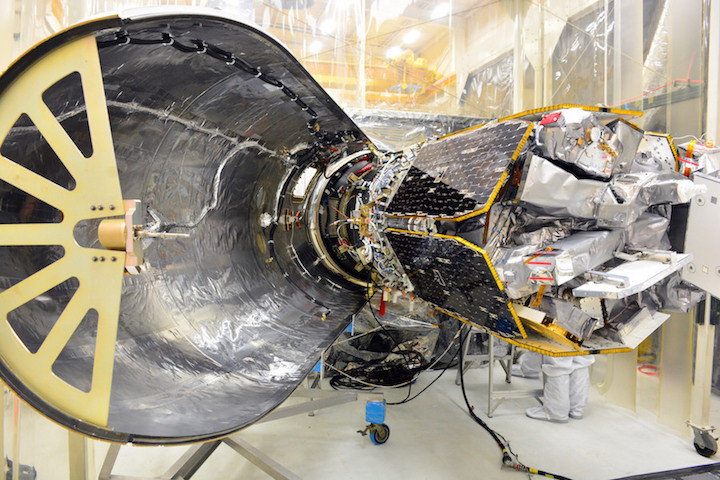
Continuing a series of delays keeping NASA’s Ionospheric Connection Explorer on Earth, NASA announced Tuesday that the satellite’s launch aboard an air-dropped Northrop Grumman Pegasus XL rocket will not occur as scheduled Friday.
The $252 million science mission was set launch from an airborne carrier jet around 4:05 a.m. EDT (0805 GMT) Friday, but NASA said Tuesday mission managers decided to delay the flight “to conduct further pre-launch testing on the rocket.”
The space agency said in a brief statement that a new launch date will be established upon completion of the testing. No further information was released by NASA or Northrop Grumman.
The three-stage, 55-foot-long (17-meter) Pegasus XL rocket arrived at Cape Canaveral Air Force Station’s Skid Strip runway Friday evening after a cross-country ferry flight under the belly of its L-1011 carrier aircraft from Vandenberg Air Force Base, California.
Ground teams from Northrop Grumman Innovation Systems, formerly known as Orbital ATK, prepared the solid-fueled Pegasus rocket and its satellite payload at Building 1555 at Vandenberg, then rolled the vehicle out to an airfield for attachment to the L-1011 aircraft, dubbed “Stargazer.”
The L-1011 flight crew navigated through the Pegasus rocket’s “drop box” at an altitude of 39,000 feet (11,900 meters) around 50 miles (80 kilometers) east of Daytona Beach before landing at the Skid Strip. The practice run was intended to familiarize the pilots with the drop zone, and verify the Pegasus rocket’s compatibility with the U.S. Air Force’s range safety systems at Cape Canaveral.

Activities that were planned in the final week leading up to Friday’s launch included a launch rehearsal, additional range compatibility checks, inspections and final closeouts on the rocket.
The ICON satellite fastened to the Pegasus XL rocket will explore a mysterious connection between the ionosphere, a layer in the upper atmosphere ranging more than 60 miles (or 100 kilometers) above Earth, and weather conditions closer to the planet.
Scientists have long thought the solar wind was the leading influencer on conditions in the ionosphere, where plasma and particles converge to generate colorful auroral displays. Plasma in this region can also potentially impact communications, satellite navigation, and even electrical power grids.
“For a long time, (the solar wind) was thought to be the primary driver of variation in the ionosphere, or variations in the space environment,” said Douglas Rowland, ICON’s mission scientist at NASA’s Goddard Space Flight Center. “What we’ve learned in the last decade is that the lower atmosphere, some of our rainstorms and our tropical rainstorms, have a much bigger impact on the ionosphere, and how that distribution of plasma occurs can affect GPS.”
ICON is the first mission dedicated to examining the link between weather on Earth and conditions high above the planet.

ICON’s ride into space has been delayed more than a year by concerns related to its Pegasus launcher. The delays ultimately drove NASA and Northrop Grumman to move the launch’s staging base to Cape Canaveral from Kwajalein Atoll, where the U.S. Army runs a test site in the mid-Pacific Ocean.
Engineers wanted more time to inspect the Pegasus rocket motors after they were mishandled during shipment to Vandenberg, officials said. That pushed the launch back from June to December 2017, the next availability in the military-run range at Kwajalein in the Marshall Islands.
Then managers decided to ground the mission to assess the reliability of bolt-cutters used to jettison the Pegasus rocket’s payload fairing and separate the satellite in orbit.
With that concern resolved, managers moved forward with plans to launch the Pegasus XL rocket with ICON on June 14. But engineers noticed an unexpected telemetry signal from the rocket’s rudder fin actuator after the L-1011’s departure June 6 from Vandenberg on a two-day ferry flight to Kwajalein.
During a planned stopover in Hawaii, officials decided to abort the mission and return the rocket to California for troubleshooting, giving up ICON’s launch slot at the busy military test range at Kwajalein. Workers removed the rocket from the carrier jet and returned it to the Building 1555 hangar, where they traced the problem to a faulty sensor requiring replacement.
That prompted NASA and Northrop Grumman to move the ICON launch from Kwajalein to a point off Florida’s east coast.
“The question we normally get is why wouldn’t you stage out of the Cape to begin with?” said Tim Dunn, a NASA launch director, in an interview in June. “It’s an interesting one because when ICON was first developed, it had an estimated mass that just tipped the scales of capability of coming out of the Cape at roughly 28-and-a-half degrees north latitude. From a capability point-of-view, Pegasus just could not do it from the Cape, so Orbital ATK offered in the proposal to go back to Kwaj.”
The Pegasus XL rocket will place the roughly 600-pound (272-kilogram) ICON satellite, also built by Northrop Grumman Innovation Systems, into a 357-mile-high (575-kilometer) orbit inclined 27 degrees to the equator.
ICON requires a dedicated launch because few other satellites go into such an orbit, restricting rideshare launch opportunities.
It turns out ICON ended up weighing a little less than originally planned, meaning its Pegasus launcher can steer the satellite into its planned orbit within needing a launch site closer to the equator.
Officials then delayed the mission from a planned launch date of Oct. 6 to address a quality issue with a vendor-supplied electrical connector on the Pegasus rocket.
The ICON mission will be the 44th launch of a Pegasus rocket on a satellite delivery mission, and the 34th in the Pegasus XL configuration with uprated solid rocket motors. It will be the seventh Pegasus launch based out of Cape Canaveral, which hosted the most recent Pegasus rocket mission in December 2016.
Quelle: SN
---
Update: 27.10.2018
.
Pegasus rocket set for weekend flight test before launch of NASA's ICON mission
![]()
Northrop Grumman's Pegasus XL rocket is expected to take to the skies off Cape Canaveral on Saturday morning, but not for a launch.
NASA and the company plan to perform a flight test to collect more information from rocket sensors that engineers want to understand better before proceeding with a launch of a $242 million NASA science mission.
Northrop's L-1011 Stargazer jet, carrying the 57-foot Pegasus and NASA's Ionospheric Connection Explorer (ICON) mission under its belly, will take off from the Skid Strip at Cape Canaveral Air Force Station and fly a path similar to the one planned on launch day.
The jet will soar to an altitude of about 39,000 feet off the coast of Daytona Beach, and potentially stay in the air for several hours.
The air-launched Pegasus rocket is equipped with new sensors suite that have produced some data not seen on previous missions.
The potential concern was revealed during two different ferry flights — one when the rocket was headed west over the Pacific Ocean to a planned launch from Kwajalein Atoll last summer, and again during its cross-country flight from California to the Cape on Oct. 19.
![]()
The launch had been planned for Oct. 26, but was delayed soon after the mission arrived at the Cape. Pending a review of the test flight data, mission managers could clear the rocket to launch ICON as soon as next Wednesday or Thursday.
On launch day, the Stargazer will take off around 3 a.m., planning to drop the rocket at altitude during a 90-minute launch window opening an hour later. The flight will be the 44th by a Pegasus rocket since 1990.
The mission aims to study the region where the upper atmosphere meets the edge of space, where terrestrial and space weather interact.
Quelle: Florida Today
---
Update: 2.11.2018
.
NASA to Hold Launch Readiness Review for ICON
![]()
NASA and Northrop Grumman will hold a Launch Readiness Review early next week at NASA’s Kennedy Space Center in Florida to ensure preparations are continuing on track for the launch of the agency’s Ionospheric Connection Explorer, or ICON, satellite.
ICON will be launched by Northrop Grumman’s Pegasus XL rocket which will be carried aloft by the L-1011 Stargazer aircraft taking off from the Skid Strip at Cape Canaveral Air Force Station in Florida.
The ICON satellite mission is expected to launch no earlier than Wednesday, Nov. 7 with a 90-minute launch window opening at 3 a.m. EST. Release from the Stargazer is anticipated for 3:05 a.m. ICON is designed to study the dynamic zone high in the atmosphere where terrestrial weather from below meets space weather from above.
Follow the prelaunch coverage and the launch on NASA Television at:
https://www.nasa.gov/live
Tuesday, Nov. 6
3 p.m. – NASA EDGE webcast from Cape Canaveral Air Force Station will discuss ICON spacecraft operations, science and engineering, as well as launch processing of the Northrop Grumman L-1011 Stargazer with the Pegasus rocket.
Wednesday, Nov. 7
2:45 a.m. – Launch coverage begins at 2:45 a.m.
Pegasus launch set for no earlier than Wednesday, but data review continues
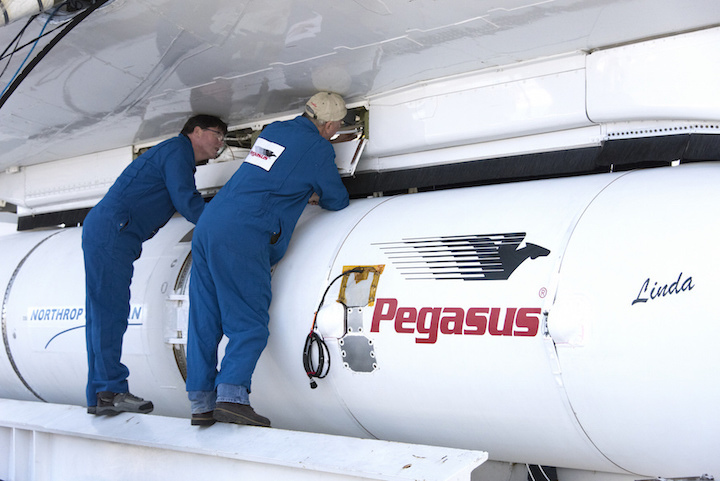
The launch of a NASA research satellite built to probe conditions along the boundary between Earth’s atmosphere and space has been tentatively rescheduled for no earlier than Wednesday off Florida’s east coast, pending the conclusion of a review of unexpected data signatures discovered on the first stage of the mission’s air-launched Pegasus XL rocket, officials said Friday.
The Ionospheric Connection Explorer, or ICON, satellite is mounted to the forward end of the Northrop Grumman Pegasus rocket underneath the belly of an L-1011 carrier jet at Cape Canaveral Air Force Station.
A launch readiness review is planned as soon as Monday or Tuesday to examine the results of troubleshooting and testing to investigate unexpected data signatures detected during the cross-country ferry flight of the L-1011 airplane and the Pegasus rocket from Vandenberg Air Force Base in California to Cape Canaveral on Oct. 19.
If engineers deem the rocket healthy, the Pegasus XL will be carried aloft to an altitude 39,000 feet (11,900 meters) over the Atlantic Ocean, where it will be dropped on an easterly heading to fire into orbit around 3:05 a.m. EST (0805 GMT) Wednesday.
“During that flight, we saw some indications that we didn’t like on the control system on the Stage 1 motor, and we spent a lot off time troubleshooting that on the ground, and decided to change out some hardware,” said Phil Joyce, vice president of small launcher programs at Northrop Grumman Innovation Systems.
The L-1011 carrier aircraft, named “Stargazer,” took off Oct. 29 on a nearly five-hour test flight to gather more data on the Pegasus control system. The test flight included multiple runs through the Pegasus drop box around 100 miles (160 kilometers) east of Daytona Beach, plus a route over Florida and the Gulf of Mexico.
The airplane returned to Cape Canaveral’s Skid Strip runway, where ground crews have conducted additional testing on the rocket to look into the cause and implications of the data signature, which Joyce said was noted in an electrical system associated with the fist stage control system.
“The issue that we had caused us to really focus in on a lot of the extremely detailed data that we look at from these flights,” Joyce said in an interview Friday.
“It’s just a matter of completing the data review, getting all the stakeholders briefed and up to speed, both internal to Northrop Grumman as well as NASA and our spacecraft customer, and that takes some time.”

Joyce said the issue currently under review is similar, but not identical, to unexpected data detected during a ferry flight of the Pegasus rocket and ICON satellite to Hawaii in June, en route to a launch staging base at the U.S. Army Reagan Test Site on Kwajalein Atoll in the Marshall Islands.
Engineers noticed an unexpected telemetry signal from the rocket’s rudder fin actuator after the L-1011’s departure June 6 from Vandenberg on a two-day ferry flight to Kwajalein.
During a planned stopover in Hawaii, officials decided to abort the mission and return the rocket to California for troubleshooting, giving up ICON’s launch slot at the busy military test range at Kwajalein. Workers removed the rocket from the carrier jet and returned it to the Building 1555 hangar, where they traced the problem to a faulty sensor requiring replacement.
That prompted NASA and Northrop Grumman to move the ICON launch from Kwajalein to a point off Florida’s east coast.
ICON will launch into a 357-mile-high (575-kilometer) orbit inclined 27 degrees to the equator. The roughly 600-pound (272-kilogram) satellite ended up weighing a little less than originally designed, allowing managers to relocate the launch from near the equator over the Pacific Ocean to the Atlantic Ocean off Florida’s east coast.
With ICON’s lower mass, the Pegasus has the ability to boost the satellite into the correct orbit without requiring a launch base so close to the equator. There are also more launch dates available at the Air Force-run Eastern Range at Cape Canaveral than at Kwajalein, which is often busy hosting military missile tests.
ICON carries scientific instruments to investigate plasma waves in the ionosphere, a layer in the upper atmosphere where colorful auroras are generated. Changes in the ionosphere can also affect communications and navigation signals coming from satellites, and ICON will study how weather systems lower in the atmosphere can influence conditions at the edge of space.
Joyce lauded the Air Force’s 45th Space Wing at Cape Canaveral for the late change in ICON’s launch site.
“What normally take about 12 months in terms of mission planning and range coordination for a launch at a new launch range took about six months in this case when we came back from Kwajalein,” Joyce said. “We had a long conversation with our NASA customer and clearly they preferred to have the launch here.”
NASA originally intended to launch the $252 million ICON mission in June 2017, but the mission was delayed after the mishandling of Pegasus rocket motors during transport to Vandenberg, where Northrop Grumman assembles Pegasus launchers, regardless of their ultimate launch location. Engineers also delayed the flight to assess the reliability of bolt-cutters used to jettison the Pegasus rocket’s payload fairing and separate the satellite in orbit.

“We want to to make sure that we’ve got a solid rocket, and that we’ve got no risk going into this launch,” Joyce said. “Obviously, we’ve had the delays. We’re going to get this right before we fly it.”
Over the last few months, Northrop Grumman returned ground support equipment for the Pegasus rocket and L-1011 carrier aircraft from Kwajalein to Vandenberg, then trucked the hardware to Florida in preparation for the mission.
“I think it demonstrates the responsiveness of the Pegasus system,” Joyce said of the late switch in launch sites.
The Pegasus XL rocket is 55 feet (17 meters) long and is made up of three solid-fueled stages. Pegasus rockets have launched 43 times on satellite delivery missions, and ICON’s launch will be the first Pegasus flight since December 2016.
Assuming engineers can clear the Pegasus rocket for launch, the Air Force range — comprising a network of flight safety and tracking facilities — can support launch dates on Wednesday and Thursday. After that, the Air Force will be busy with pre-planned maintenance on range systems for a few days, Joyce said.
The next launch scheduled on the Eastern Range after ICON is set for no earlier than Nov. 14, when a SpaceX Falcon 9 rocket is supposed to lift off from pad 39A at NASA’s Kennedy Space Center with the Es’hail 2 communications satellite.
Quelle: SN
---
Update: 5.11.2018
.
After delays, Pegasus rocket could fly NASA's ICON mission from Cape Canaveral this week
After adjusting its wings, launch teams are deciding if a Pegasus XL rocket is ready to fly a $242 million NASA science mission from Cape Canaveral before dawn Wednesday.
Engineers last week swapped out some components in the electrical system that controls three fins at the tail end of the Northrop Grumman rocket carrying NASA’s Ionospheric Connection Explorer mission, or ICON.
Sensors had shown some potentially worrisome signs during the air-launched rocket’s Oct. 19 ferry flight to the Space Coast from its home base in California, delaying a planned Oct. 26 launch.
“It’s been a long road to get here, and we are very confident that we’re going to get comfortable with this vehicle and be ready to go (this) week,” said Phil Joyce, Northrop’s vice president of small space launch programs.
As of Friday, the mission was targeting launch no earlier than 3:05 a.m. Wednesday, bypassing poor weather forecasts over the weekend.
![]()
The outlook is better this week, with an 80 percent chance of favorable conditions during the 90-minute windows available Wednesday and Thursday.
On launch day, Northrop’s L-1011 Stargazer carrier aircraft will take off from the Skid Strip at Cape Canaveral Air Force Station around 2 a.m., climb more than seven miles up and fly a racetrack pattern through a drop zone about 100 miles off the coast of New Smyrna Beach.
The three-stage, 57-foot rocket will fall for about five seconds before igniting its first-stage motor, and should deliver ICON's 634-pound, vending machine-sized satellite to orbit about 11 minutes later.
The offshore launch is not expected to be visible from the coast, but will be broadcast on NASA TV.
Managed by NASA's Launch Services Program at Kennedy Space Center, the ICON mission is flying nearly a year late because of the rocket.
Separation system issues caused a first delay last December. Then in June, a ferry flight to the original launch site at Kwajalein Atoll in the Marshall Islands was aborted when rudder sensors revealed potential concerns.
Similar concerns arose during last month’s trip east to the Cape.
During those captive-carry flights, the rocket’s control, navigation and telemetry systems are active as they would be on a launch day, making them practice runs of sorts at altitude and in sub-zero air temperatures.
“In some cases that shows you things that you wouldn’t see sitting on the ground,” said Joyce. “Instead of getting cute and trying to get happy with what we had, we elected to go and replace hardware.”
To show that hardware change had worked, the jet and rocket took to the skies Oct. 28 for a nearly five-hour flight test. A weeklong review of the data and testing followed.
At least that work was a bit easier to do at the Cape than it would have been at Kwajalein in the remote Pacific Ocean.
"Being here at the Cape in the continental United States has really given us the ability to rapidly correct this issue," said Joyce.
The mission can attempt launches through Thursday before losing the Eastern Range, and it was not immediately clear when the next available opportunity would be.
The Pegasus, the world’s only active air-launched rocket, is flying for the 44th time since 1990 but only the second time in the last five years.
Developed by Orbital Sciences Corp. — now part of Northrop — the Pegasus was the first privately developed U.S. launcher. A version of it hangs in the Smithsonian Air and Space Museum’s Udvar-Hazy Center in Chantilly, Virginia.
“With all the new startups in the space launch business, Pegasus was really the prototype for that back starting in the late 1980s,” said Joyce. “It’s a unique vehicle that’s launched from all over the world.”
The rocket suffered several failures early on but has completed its last 29 missions successfully, including NASA's multi-satellite CYGNSS hurricane-hunting mission flown from the Cape two years ago.
The upcoming mission, ICON, aims to study the region about 360 miles up where earth weather and space weather meet.
Getting there has proven a challenge.
“There’s no question that this has been very challenging mission get off, but it’s the poster child, if you will, for making sure we get it right,” said Joyce. “We’ll never compromise there. This latest small delay of a week or so is really just making sure that after all the things we’ve done here, that we don’t have any lingering concerns.”
Quelle: Florida Today
---
Update: 6.11.2018
.
Weather good for unique Pegasus rocket launch with NASA ICON, but don't expect to see much
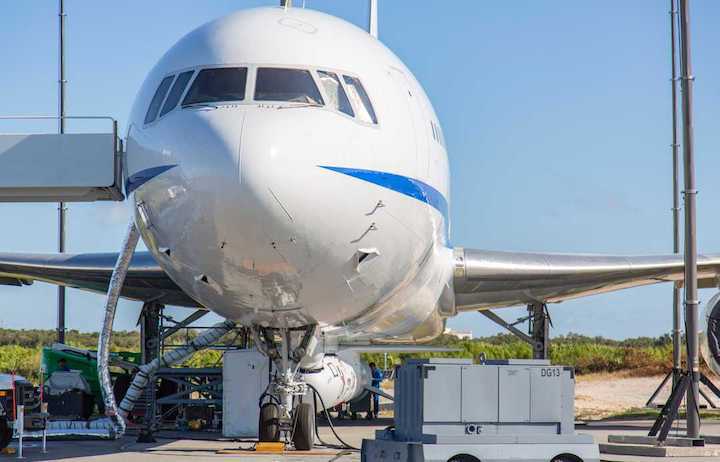
Spaceflight fans will need to tune into webcasts early Wednesday to get the best views of a unique air-launched Pegasus rocket slated to take flight off Florida's coast and into the pre-dawn sky.
Well before the 90-minute launch window opens at 3 a.m., a rare L-1011 Stargazer aircraft will lift off from Cape Canaveral Air Force Station's Skid Strip and target a northern flightpath. Secured below the trijet airliner will be Northrop Grumman's Pegasus XL, a 57-foot-long, three-stage rocket chosen by NASA to launch the Ionospheric Connection Explorer, or ICON, to low-Earth orbit.
When the seven-member team on board Stargazer is ready, pilots will flip the "Pegasus Normal Release" switch at about 40,000 feet, rapidly pitch the aircraft upward to increase distance, then follow along as the rocket's automated systems take over to launch the 634-pound spacecraft five seconds later.
But despite the Air Force's most recent weather forecast, which points to 80 percent "go" conditions for the attempt, all this means those hoping to get a view likely won't see anything, even if cloud cover is light. FloridaToday.com/Space will host NASA's live video feeds beginning at 2:30 a.m. Wednesday.
Teams are expected to conduct a pre-launch readiness review Tuesday morning.
ICON will be positioned between space and the atmosphere at an altitude of about 360 miles, allowing its suite of instruments to collect data on the zone where Earth and space weather meet. Scientists should then be able to piece together a better understanding of the zone's physics and how it can impact technology, such as GPS signals.
Its relatively small size – about the height of an average refrigerator – and straightforward orbit means it doesn't necessarily need the raw power and capacity of larger launch vehicles.
“The Pegasus is about the right size fit," said Omar Baez, launch director for NASA's Launch Services Program, which is based at KSC. "A bigger vehicle wouldn’t have made any significant gains and probably would have cost more. It’s the perfect platform for this size satellite.”
That simplicity in size, weight and orbit means a quick vault to its final destination, too: About 11 minutes after ignition, the satellite is where it's meant to be.
“That’s a very special and old airplane," Baez said. "It’s got some specialized equipment on it and seven special people, so we need to get them back safely, too."
Debuted as the Lockheed L-1011 TriStar in the 1960s and meant primarily for airlines, the 175-foot-long aircraft was produced until the 1980s. Northrop Grumman's L-1011, later named Stargazer, entered into service in the 1990s and has since hosted 43 Pegasus missions as an airborne launch pad.
NASA expects the $242 million mission to stay on orbit for two years, though spacecraft typically function longer than originally contracted.
"For us, this has been a great year," said Robert Lockwood, a program director at Northrop Grumman. The company earlier this year launched two other high-profile science missions for NASA: The Transiting Exoplanet Survey Satellite, or TESS, on a SpaceX Falcon 9 rocket, and ICESat on United Launch Alliance's final Delta II flight.
With Pegasus XL slated to launch Wednesday, that brings the company to three different launch vehicles for three different missions.
"We can accommodate all those vehicles," he said. "We can ride on anything."
Quelle: Florida Today
---
Update: 7.11.2018
.
In less than an hour, we'll launch a satellite which takes off before it lifts off ! Our #NASAICON mission takes to the sky aboard a @northropgrumman "Stargazer" aircraft, which releases the #PegasusXL rocket that carries ICON to orbit.
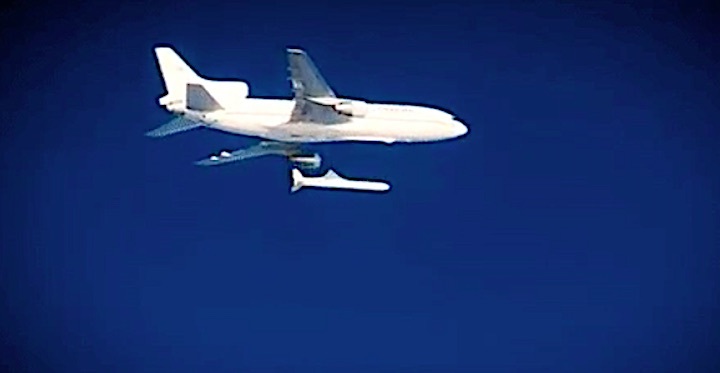
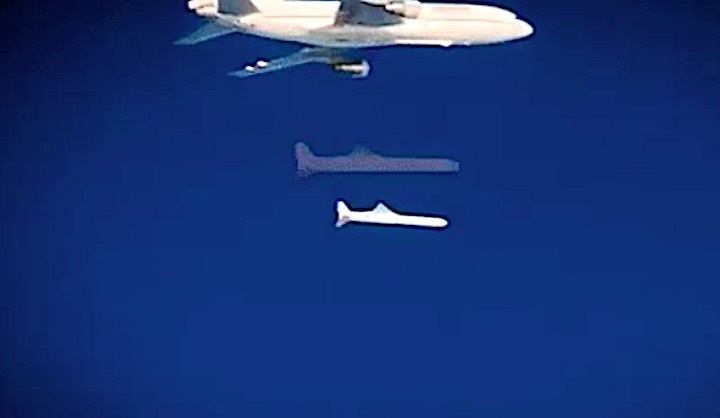
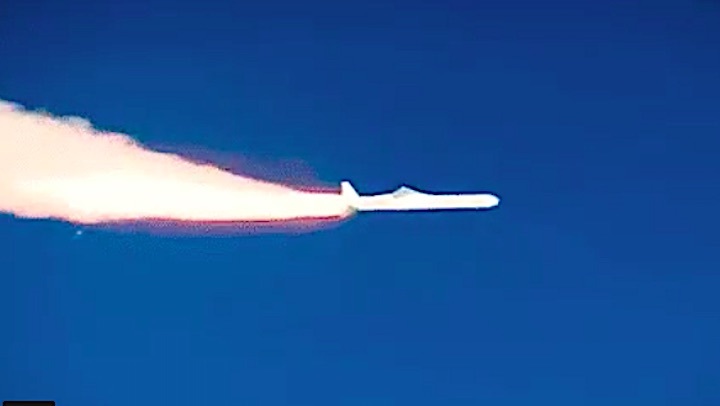
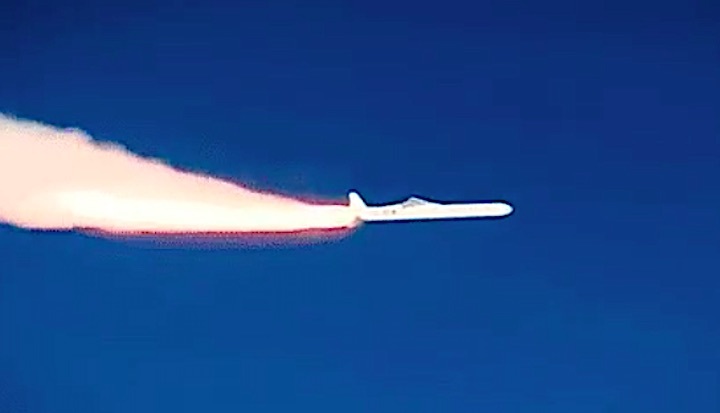

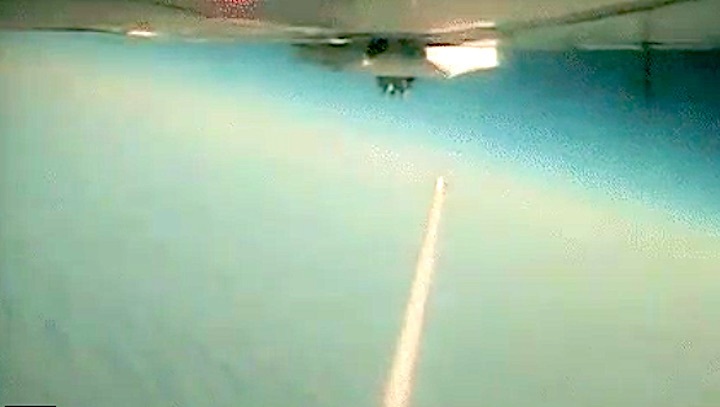
+++
Pegasus XL is a winged, three-stage solid propellant rocket built by Northrop Grumman that can launch a satellite into low earth orbit. The Pegasus is carried aloft for launch by a L-1011 jet called the "Stargazer."
After takeoff, the aircraft flies to about 39,000 feet over the ocean and releases the rocket. Following a five-second free-fall in a horizontal position, the Pegasus XL rocket's first stage ignites. The aerodynamic lift, generated by the rocket's triangle-shaped wing, delivers the payload into orbit in about 10 minutes.
Pegasus XL is used to deploy small satellites weighing up to 1,000 pounds into low-Earth orbit from virtually anywhere in the world where a runway with support and checkout facilities is available. These locations include Kennedy Space Center in Florida, Vandenberg Air Force Base in California, Wallops Flight Facility in Virginia, and the Kwajalein Missile Range in the South Pacific.
Here are some typical countdown milestones and key events that take place after the countdown begins. NOTE: Event times and lengths are approximate and subject to change.
Countdown for Pegasus
T-4 hours, 15 minutes
- Ground operations checks are completed
T-3 hours, 15 minutes
- NASA launch manager and NASA advisory manager take a "management on station" voice-check poll
T-2 hours, 20 minutes
- Flight crew enters the L-1011 carrier aircraft
- Pilot completes prestart checklist
T-2 hours, 18 minutes
- Engine start poll is taken
T-2 hours, 10 minutes through T-1 hour, 20 minutes
- Ground launch team receives "go" for engine start
- Start engines
- Aircraft stairs are removed and the hatch is closed
T-1 hour, 45 minutes through T-45 minutes
- L-1011 pre-taxi checklist complete
- Flight Termination System (FTS) power on
- Voice checks complete
T-1 hour, 15 minutes
- "Go" for taxi after tower clearance is given
- Taxi is under way
T-1 hour, 3 minutes
- Last chance status check completed
T-1 hour
- Ground launch team "ready for takeoff" poll taken
- Launch team is "go" for takeoff
- After tower clearance, the L-1011 carrier aircraft takes off
- Chase plane takes off to follow the L-1011
T-30 minutes
- Chase plane visual inspection
- Report on turbulence, winds and clouds at launch point requested
T-15 minutes
- Release mechanism is armed
T-12 minutes
- Verify FTS check is nominal
- Transfer avionics to internal power
T-9 minutes
- Weather status report is confirmed and green for launch
- Peak power has been passed
- L-1011 heads for the drop point
T-7 minutes
- Range status report is given
- Verify transient power is "on" and vehicle is safe
T-5 minutes
- NASA launch manager conducts final launch readiness poll to enter terminal countdown
- Avionics now on internal power
T-45 seconds
- Fin battery is activated
T-20 seconds
- Verify fin testing and heading status
T-10 seconds
- Pilot confirms Pegasus is "go" for launch
T-Zero
- Pegasus is dropped from the L-1011
T+5 seconds
- Pegasus first stage motor is ignited
T+1 minute, 17 seconds
- First stage motor burnout
T+1 minute, 30 seconds
- First stage separation, followed by second stage motor ignition
T+2 minutes, 11 seconds
- Fairing separation
T+2 minutes, 44 seconds
- Second stage motor burnout
T+4 minutes, 53 seconds
- Second stage separation
T+5 minutes
- Third stage motor ignition
T+6 minutes, 12 seconds
- Third stage motor burnout
T+6 minutes, 32 seconds
- Begin thermal roll
T+8 minutes, 42 seconds
- End thermal roll
T+9 minutes, 32 seconds
- Payload separation
- Pegasus has successfully delivered its payload into orbit!
- The L-1011 carrier aircraft returns to its departure point.
Stargazer Aircraft Airborne with Pegasus XL, ICON Satellite

Photo credit: USAF 30th Space Wing/Rod Speed
The Northrop Grumman L-1011 Stargazer aircraft carrying a Pegasus XL Rocket with NASA’s Ionospheric Connection Explorer, or ICON, satellite is airborne after taking off from the Skid Strip runway at Cape Canaveral Air Force Station in Florida.
Northrop Grumman produces the Pegasus XL, a small expendable rocket that attaches beneath the Stargazer aircraft and is carried to 39,000 feet to be released for launch. It is the only airborne-launched rocket.
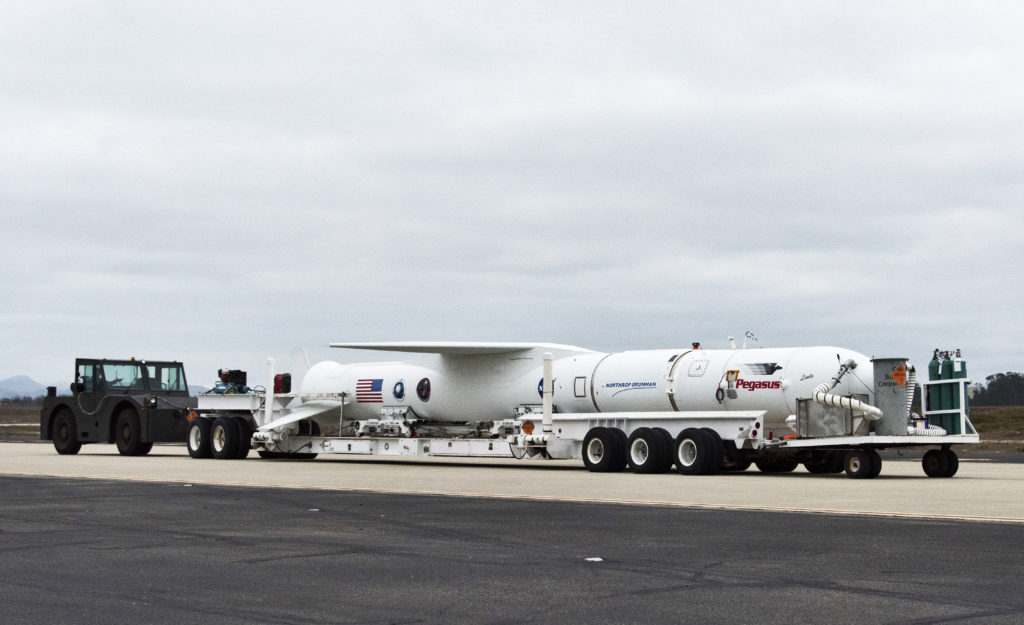
Photo credit: USAF 30th Space Wing/Tony Vaulcin
The Pegasus XL can carry a payload up to 992 pounds to low-Earth orbit. The rocket weighs about 51,000 pounds and measures 55.4 feet in length and 50 inches in diameter. Pegasus has a wing span of 22 feet
With the Stargazer aircraft flying over the Atlantic Ocean about 50 miles offshore from Daytona Beach Florida, the Pegasus rocket will be released. Five seconds later, the solid propellant engine will ignite and boost the ICON satellite to orbit.
Did you know!
The L-1011 Stargazer is a mobile launch platform and the only one of its kind in the world.
The 90-minute launch window opens at 3 a.m. EST, with a targeted release at 3:05 a.m. EST about 50 miles east of Daytona Beach, Florida. Ignition of the Pegasus XL rocket occurs five seconds after release from the Stargazer.
Launch Day Arrives for ICON
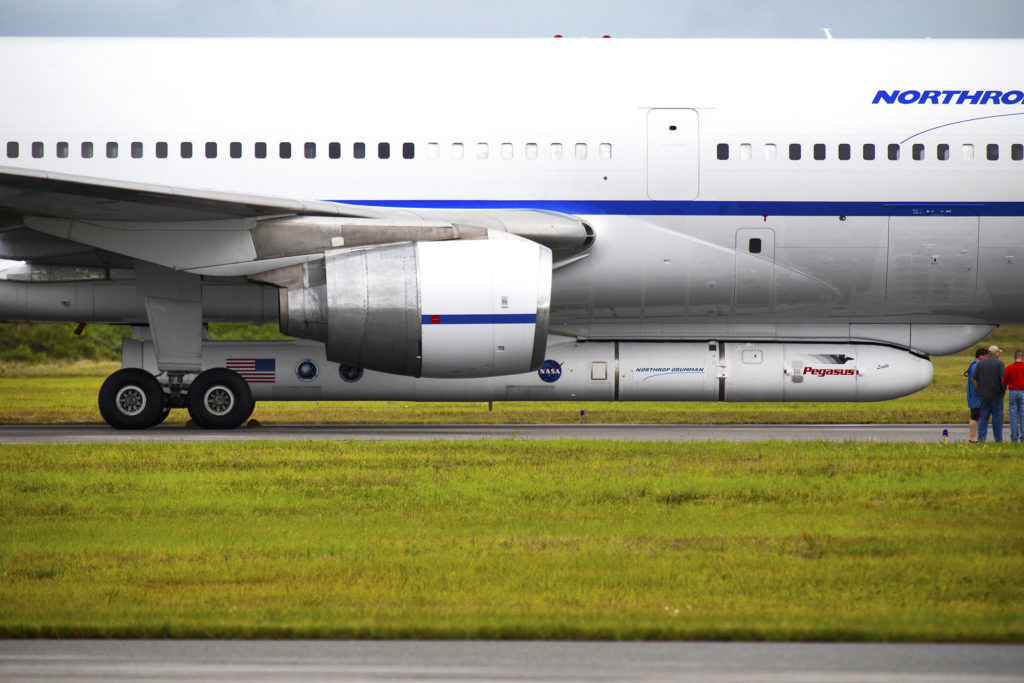
Photo credit: NASA/Kim Shiflett
The Northrop Grumman L-1011 Stargazer aircraft is poised to take off from the Skid Strip runway at Cape Canaveral Air Force Station in Florida. It carry a Pegasus XL Rocket with NASA’s Ionospheric Connection Explorer, or ICON, satellite. It is designed to study the dynamic zone high in our atmosphere where terrestrial weather from below meets space weather from above.
The 90-minute launch window opens at 3 a.m. EST, with a targeted release at 3:05 a.m. Ignition of the Pegasus XL rocket occurs five seconds after release from the Stargazer.
The official weather forecast calls for a 90 percent chance for favorable conditions for launch. The primary launch weather concerns are cumulous clouds.
Be sure to join us here at 2:30 a.m. EDT to follow this live blog-cast during the last stages of the countdown and early portions of flight.
Beginning at 2:45 a.m. EST, you also may watch the countdown on NASA Television for updates at:
+++
We have encountered an anomaly while ferrying the #PegasusXL for the launch of #NASAICON. The L-1011 is returning to base for investigation. The team is evaluating the next launch attempt.
+++
UPDATE: The launch of our #NASAICON spacecraft aboard a @northropgrumman #PegasusXL Rocket is scrubbed for today. The next launch opportunity will be Thursday, Nov. 8. For more updates, visit: https://go.nasa.gov/2qvQU1E
+++

